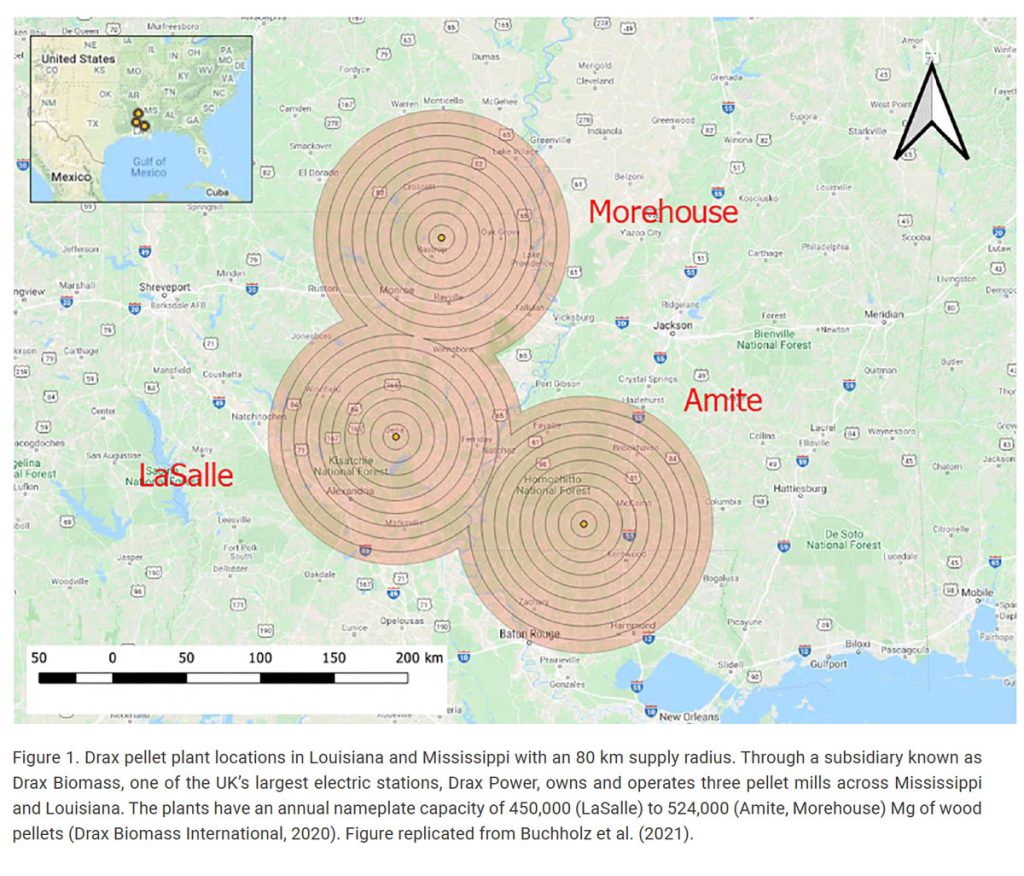Close
Close
Drax Power Station is the UK’s largest biomass generator, combusting wood pellets to generate electricity. It produces around 5% of the UK’s electricity, and sources the majority of its feedstock from North America, including from its own pellet mills in Mississippi, Louisiana and Arkansas.
Drax plans to convert two of its four biomass units to bioenergy with carbon capture and storage (BECCS) from 2030, with the intention of generating ‘carbon removals’ as well as electricity, to contribute to the UK’s Net Zero target.
This new report is an update of SIG’s 2021 peer-reviewed analysis of a UK biomass power station, where wood pellets are sourced from three Drax-owned mills in the southern US. This update models the impact of installing carbon capture and storage (CCS) technology at the power station.
Bioenergy with carbon capture and storage (BECCS) from forest biomass is a prominent carbon removal technology in UK climate pathways, assumed to produce negative emissions by capturing and storing CO2 released when wood is combusted.

The analysis assesses the whole system carbon impact if CCS technology became fully operational on all four units at the Drax power station after 2030, with a 90% carbon capture rate. The analysis uses our data from US forests (including the USDA Forest Service Forest Vegetation Simulator and interviews with forest managers in Drax pellet catchments).
Results indicate that the proposed UK BECCS system would lead to more CO2e in the atmosphere than the counterfactual scenario without the BECCS system, until approximately 2053. We find that the impact of the CCS technology, presumed to sequester CO2, is outweighed by the deleterious impact of wood pellet sourcing on forest carbon stocks and flows.
Updates to policy and accounting regimes to
reflect this a full and accurate cLCA could therefore substantially undermine
the case for investment in BECCS for UK Net Zero.